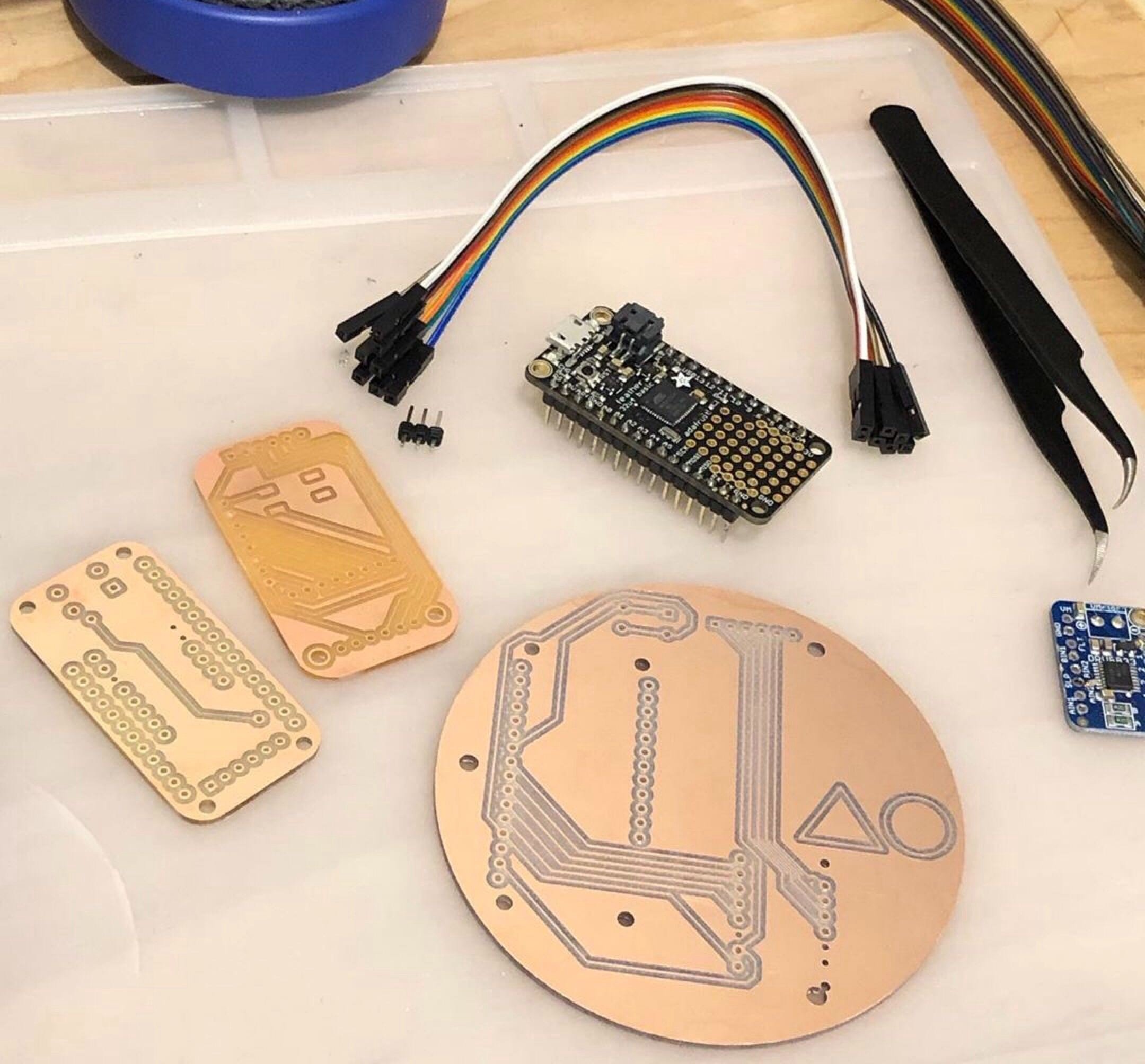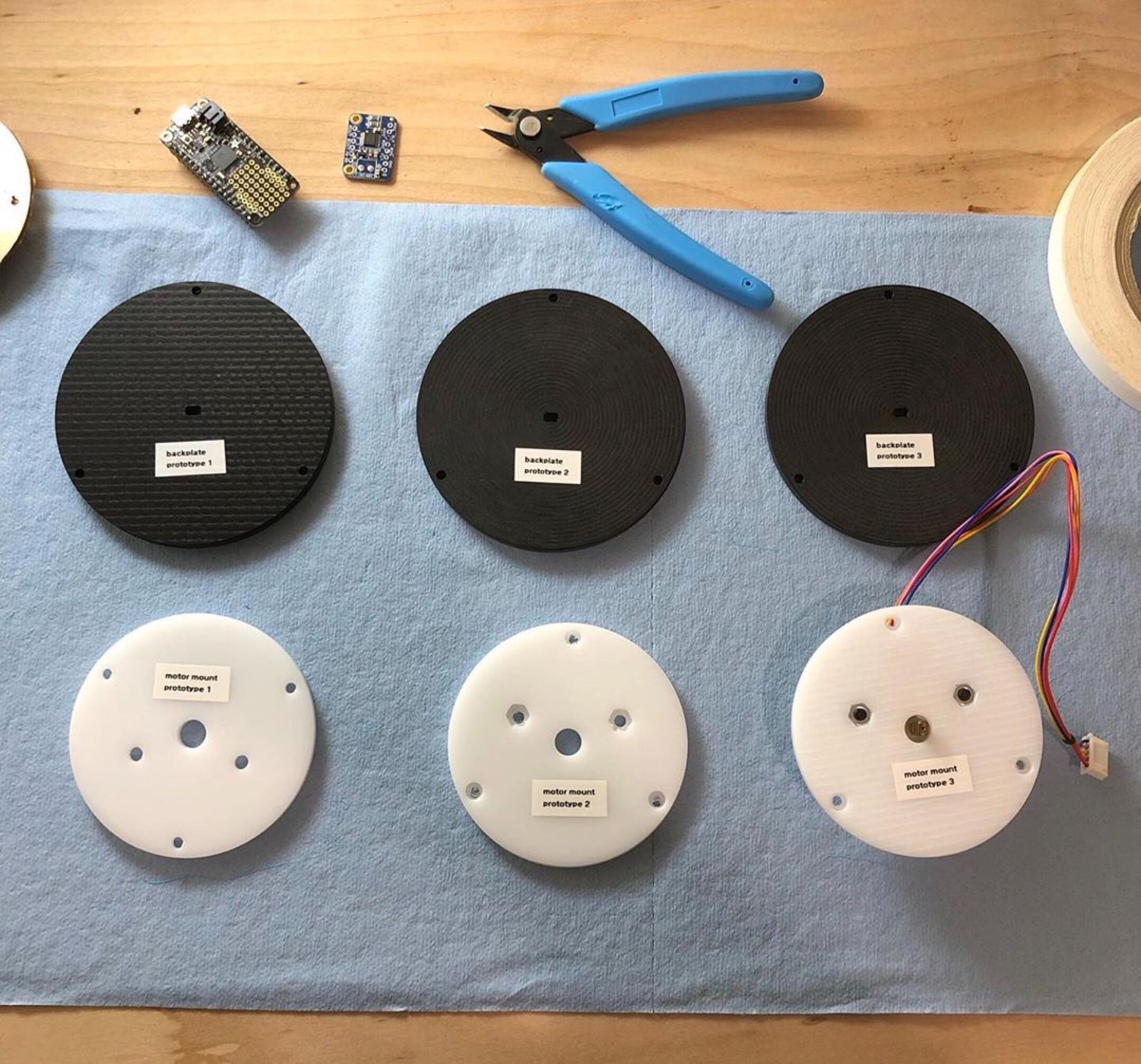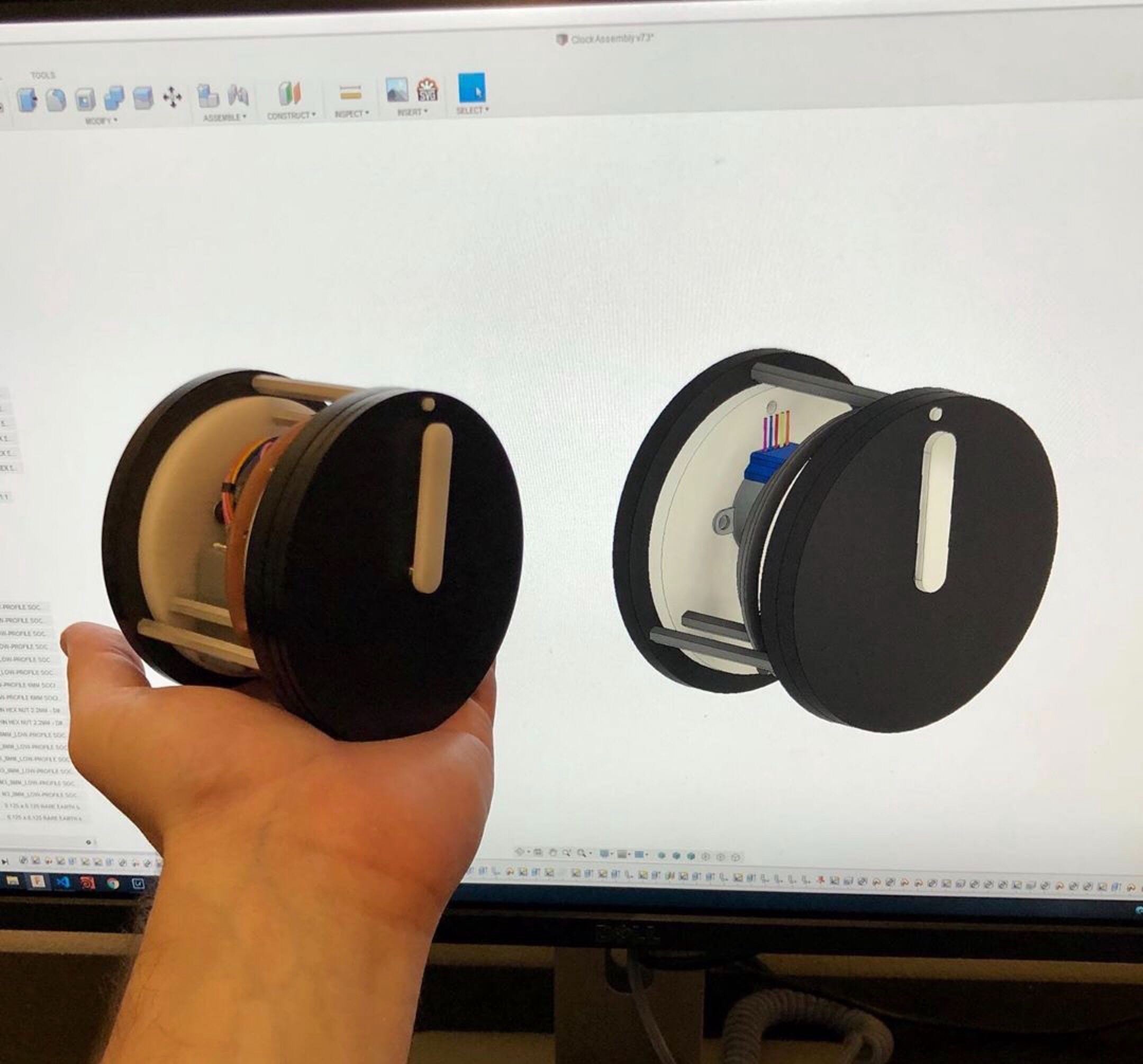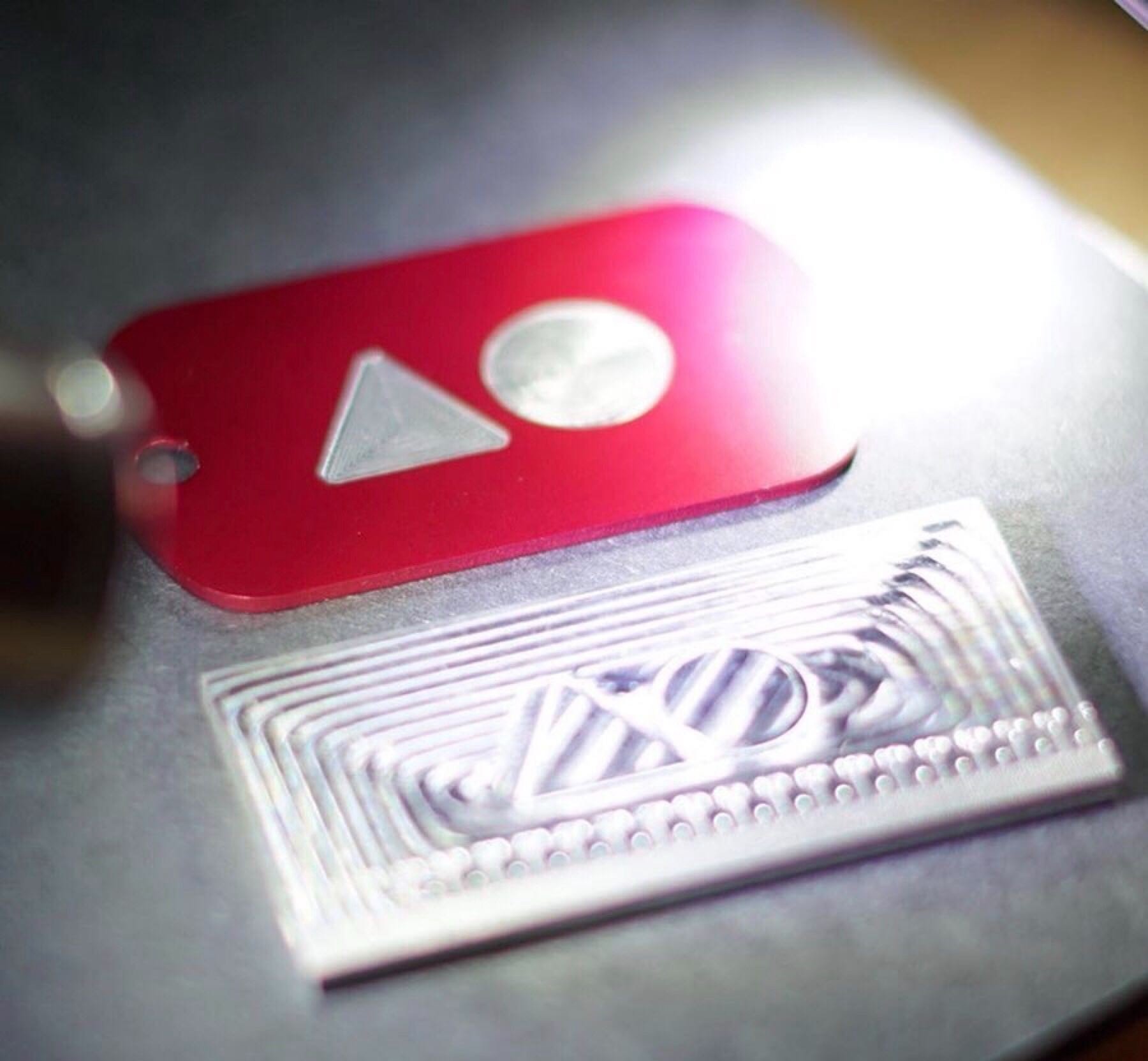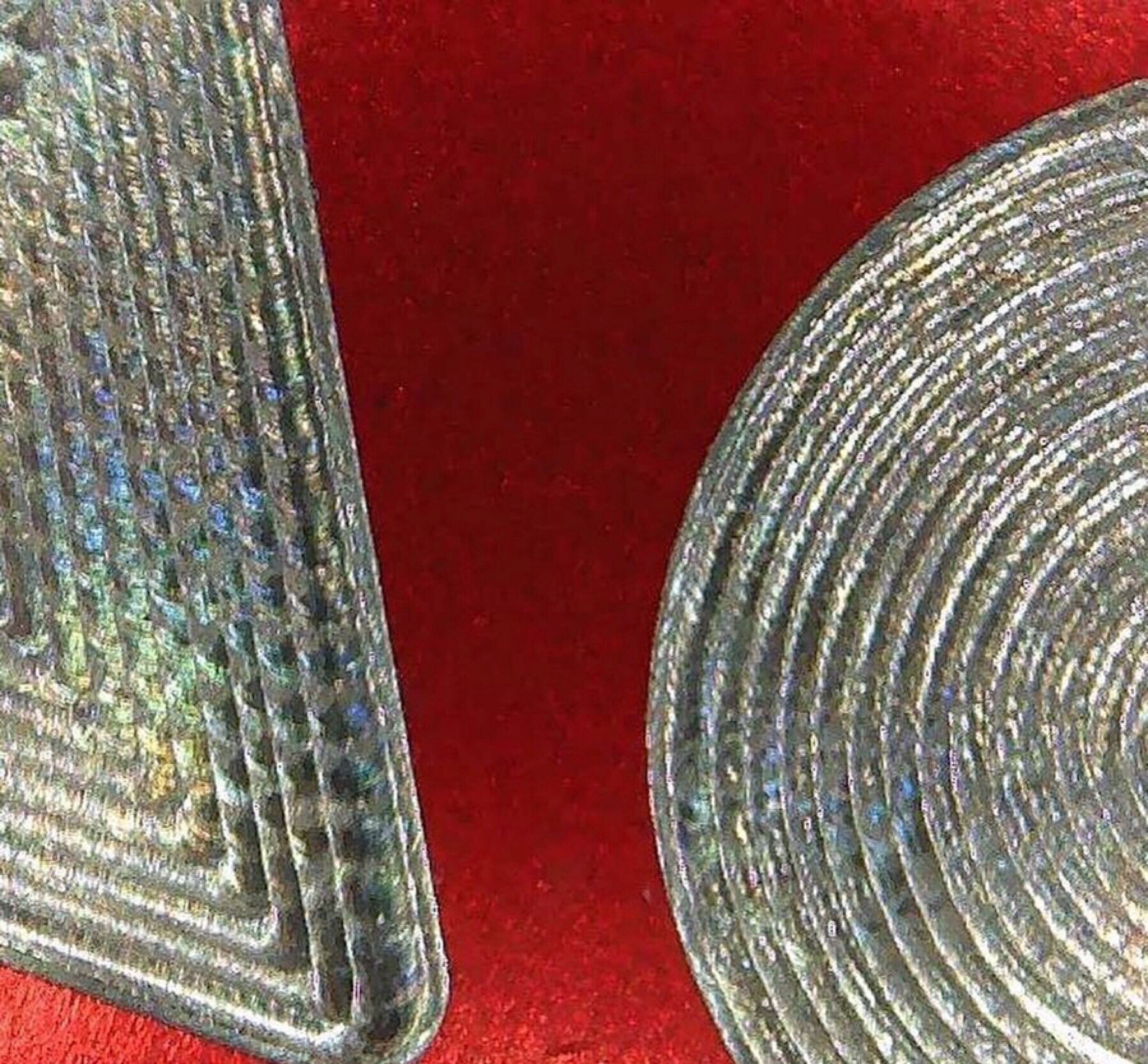Albert Omoss on Turning the Abstract into Reality
When it comes to thinking outside the box, Albert Omoss is a pro. Albert is a director, designer, and artist with a unique style that is unmistakable. Recently, Albert spent time as a Bantam Tools remote resident and used our Desktop PCB Milling Machine to mill a rolling clock that offers a spatial view on the passing of time. We spoke with Albert about his experiences using our mill, what inspired him to machine the rolling clock, and using digital fabrication technologies to turn abstract designs into a reality.
What’s your background? How did you get started with CNC machining?
My background is a mix of design and engineering. I’ve always loved technology and using new technology to create things. Most of my professional career has been in computer graphics, and I’m always seeking better ways to bridge the gap between what I can create inside a computer and what I can create in the real world. CNC machines are that bridge, combining my passions for geometry, physics, design, electronics, mechanics, and programming. The ability to create one-of-a-kind physical objects out of materials that will last generations is something incredibly exciting to me. CNC machines are the ultimate creative tool for manipulating physical reality.
What’s your favorite feature of the Bantam Tools mill?
I love how compact the machine is. The creative potential packed inside that little cube is really impressive.
What has the Bantam Tools mill enabled you to do that you previously couldn’t?
Previously, in my home shop, as far as rapid prototyping goes, I was limited to 3D printing. I’ve always felt somewhat constrained by the accuracy and the materials available for desktop 3D printers. While 3D printing is great for figuring out basic size and shape, it’s not the ideal process for a lot of the things I want to make: parts with intricate mechanisms, threaded holes, or tight tolerance fits.
“CNC machines are the ultimate creative tool for manipulating physical reality.”
The Bantam Tools mill opens up the possibility to create incredibly precise parts out of a wide variety of materials. It also opens up the capability to precisely modify existing parts, which a 3D printer can’t do.
Albert designed this brass coaster using Fusion 360 and Houdini.
Where did the idea for your rolling clock come from?
The concept arose from trying to think of a small but somewhat intricate mechanical device I could make with the mill. A clock seemed like a perfect project because it requires tight tolerances and a PCB for the electronics, and I knew the mill was designed to make PCBs. I didn’t want to make an ordinary clock, though. I thought of inverting the mechanics of the clock to have the body move around static hands, and how that could make the clock roll along a surface.
Aside from the mill, what are three tools you can’t live without?
Computer: Almost everything I make is touched by a computer at some point, whether using the computer as a calculator or doing complex modeling or physical simulation.
Digital calipers: I can’t live without a way to accurately measure things around me. I probably use calipers more than any other single hand tool.
Pencil: No matter how comfortable I become with a computer, I always fall back to using a pencil to sketch out ideas. There’s not a more direct way for me to get out ideas and keep track of bits of information throughout a project.
A lot of your visual artwork is abstract — how do some of these shapes and design processes translate to CAD and CAM?
I find that challenge and contrast to be fascinating. I like the constraints of trying to design something that has to be manufactured or function as part of a machine. Those limitations inform the design process, and then the design process informs the manufacturing process. It’s an interesting push and pull when you’re making physical things versus something that just has to exist inside a computer.
Was it easy to integrate the Desktop PCB Milling Machine into your usual design process?
I think Bantam Tools makes it very easy to get started, whether you’re milling PCBs, engraving, or doing more complex machining. I did one of the tutorial projects, and that helped me understand how to operate the machine. I was already using Fusion 360 for CAD, so using its CAM workspace and posting toolpaths to the Bantam Tools mill was pretty easy to figure out.
What are three tips you’d offer machinists or designers using the mill for the first time?
Take your time planning your cuts.
Always keep a Shop-Vac close by.
Have fun!
Albert Omoss is a director, designer, and artist. He’s crafted an award-winning title sequence for FITC Tokyo 2015 and directed the short films Plug Party 2k3, Entangle, and Undercurrents. His experience breaking into the design industry has been featured on Motionographer.
Follow Bantam Tools on Instagram, Facebook, Twitter, and be sure to subscribe to the Bantam Tools mailing list to receive more content like this.



